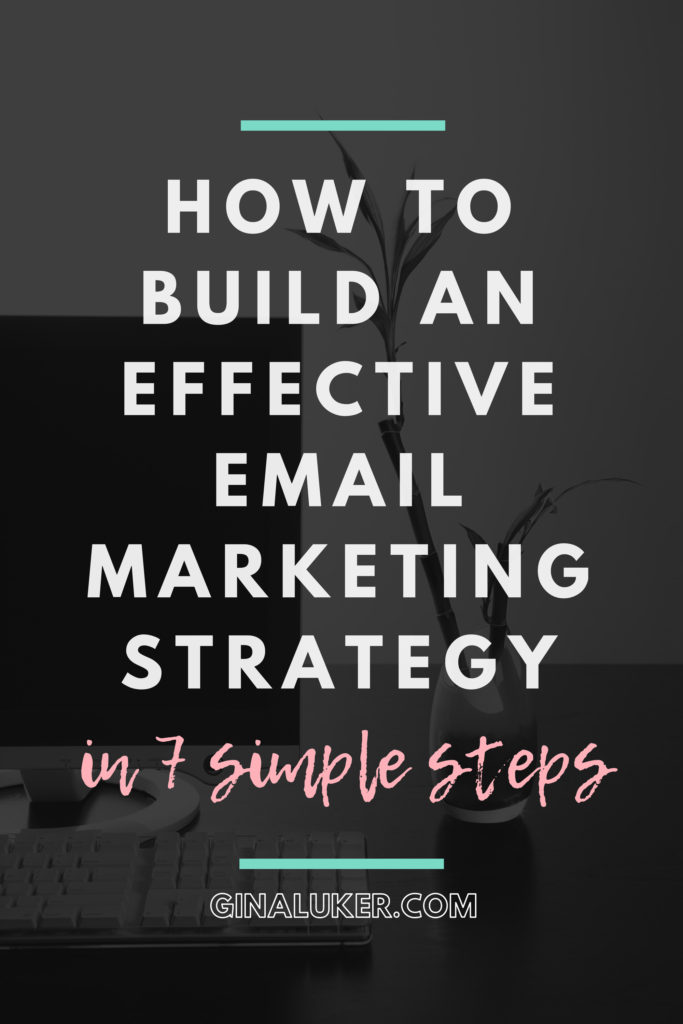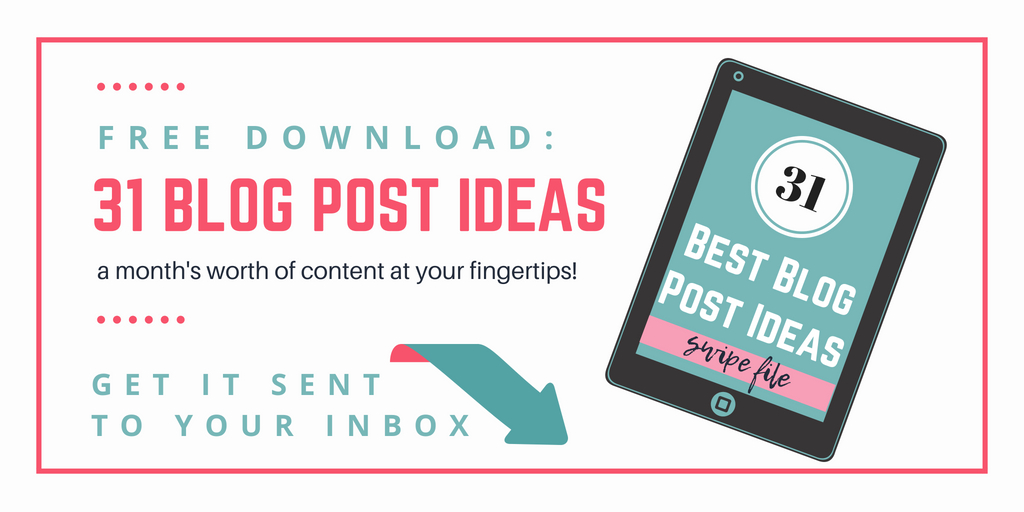Feel like you can’t grow your email list? Or that you aren’t using it to it’s potential? I’ll show you how to create a email marketing strategy that works!

*this post contains affiliate links*
My grandmother used to tell me “Anything worth having is worth working for.” While it holds true for almost everything in life, it definitely holds true in blogging. Because growing your email list and using it effectively are the corner stones of blogging (or they should be!), then it’s going to take a lot of work to get it just right. I’m not going to tell you this is easy. But I can help take away some of the frustrations by helping you out with a proven plan that works.
What is an email marketing strategy?
Simply put, an email marketing strategy is when you create a purpose and a system for acquiring email subscribers, then emailing them with a specific end goal in mind.
It doesn’t have to be overly complicated (but it definitely can be if you’re ready to go all out.) No matter if you’re just trying to drive traffic to a blog post or if you’re trying to sell them a product you have created or are an affiliate for. Then having a reason why you’re emailing your list is crucial to getting any sort of measurable results.
Why an email marketing strategy is so important
First, you’ve gotta know what your people want from you before you’ll have any clue how to get them to purchase your products without looking like a slimeball. You need to create authentic connections and offer them things that relate directly to THEM. Not just whatever you happen to decide. Pay attention to your demographic, and pay attention to what content they’re interacting with to guide you.
The thing about email marketing is that it’s a direct line between you and your reader. No worrying about whether algorithms are going to eat up your content into the abyss – if you send it, and you do it correctly, then it will end up in their inbox. And if you are giving them content they reallllly want – then they’ll start to actually look for your content and even reply and interact with you. Those are the folks who will invest in you, but what products you’re selling, and support you no matter what.
Email marketing strategy means you have a purpose to all stages of the relationship with your reader and are making it stronger every step of the way.
What are the stages of an email marketing strategy?
At the core of it, there’s three main steps in building an email marketing strategy:
- Offering an incentive (or freebie) to get people to sign up for a list.
- Write content that compliments your incentive.
- Send emails to that list that nurture your relationship and then eventually sell them a product.
That’s pretty much the core of how it all works. You need great content to pull them in, offer an incentive that will benefit them and they want/need to get them to sign up for your list, then email your subscribers relevant items to purchase (whether yours or affiliate products.)
How to build an Email Marketing Strategy
Step 1: Analyze your current strategy.
Do you send out emails daily or weekly? Are they RSS driven? Dig deep into your stats on the emails you’ve sent out in the last 60 days to find these four things:
- What was the OR (open rate)?
- What was the CTR (click-through rate)?
- When did you send them (day & time)?
- What was the subject about?
I use a simple calendar to keep track of it all – and you can simply jot down those things for each email you’ve sent in the last 2 months. This will help you create an email marketing strategy for the absolute best day of the week to send out a weekly newsletter.
Step 2: Know your audience.
Looking back at my last two months, I can tell you one thing with absolute certainty: my people are highly focused on DIY projects. Sending any other subject focus doesn’t really work. Determine what common themes in your email analysis received the highest CTR and OR – then start leaning that direction with your email strategy.
Step 3: Segment your list.
I discussed segmenting with ConvertKit in my Complete Guide to Email Marketing for Bloggers, but this is where it really comes in handy. Let’s say you talk about two different subjects (ex: DIY and Blogging Information.) I’m betting that one of these, as a whole, isn’t really interested in the other. Creating separate lists with segments will help you to increase both open rates (OR) and click-through rates (CTR) because while the lists are smaller, they are interested in EXACTLY what you’re giving them.

Step 4: Create specific email subscription incentives.
Once you’ve determined when to send what information to whom, then you need to shift your focus onto finding more people. If you only create one resource as an incentive to your entire audience, then you’re missing out. No one idea is going to appeal to every single person – so it’s your job to find a way to make your reader’s life easier. Help them out! If you really meet their needs, they become subscribers to attain the information (whether it’s an course, an ebook, printable, etc.).
You need to create at least one main incentive for each segment of your audience – however creating super specific incentives for your top 10 posts is the very best way you can capture their attention. Make the printable/course/book something you relate to in the post itself, so they find incredible need for it.
Step 5: Address your segments individually.
If you really want to make the most out of your email list (and hey – you should, you’re paying for it!), then you need to send out specific newsletters to those individual segments. My blogging newsletter and food newsletters have a much higher open rate than my overall newsletter. That’s because they are intensely interested in the subject! Start sending out newsletters to multiple segments so you can test to see what works.
Step 6: Test, analyze and revise.
This one is the hardest part of all: you’re going to have to test the waters. Once you find a day that works best, then try to send it at different times of the day. Start with morning, lunch time, then at night. You’ll find that some lists perform better than others at different times. Morning seems to work better for my DIY crowd, while Disney people prefer night time reading.
If you have multiple audiences within one site, you’re going to have to test to find out what works. After you’ve tried all three time slots, then pick the best and try it again. If you still have good success, then you know what works.
Step 7: Create content to feed your audiences.
From now on, when you write on a subject, make sure you are thinking specifically of that segment. Don’t assume you are writing to one massive group, write to those who are reading that specific content. Doing this will give you content to feed your newsletter and draw that audience over.
BONUS: Add in monetization.
Have you ever tried to monetize your email list? Here is the most effective email marketing strategy for affiliate sales: find services that are truly beneficial to your audience, test them out and then share your authentic opinion on them.
Some bloggers are more aggressive at this tactic than I am, but I like the way Gary Vaynerchuk describes things in Jab, Jab, Jab, Right Hook. The method is to give, give, give to your readers, then ask them to do something for you. This is based heavily on the Theory of Reciprocity, which says if you are kind to people, they will instinctively reward you.
It breaks down to the fact that you are creating an email marketing strategy and maintaining a newsletter. Don’t do it for the payday – do it because you love your audience (and if you don’t, then you’re probably in the wrong business.) Establishing that trust helps you to develop relationships with your readers – and when you have an offer that it truly beneficial to them, then they will be much more interested in it, and in turn your conversion rate will be much higher.
A few notes on this tactic: I don’t intentionally promote more than one service a month. I may write entire blog posts on these topics, but I will not directly promote more than one product a month. Why? I hate being sold to, and through many conversations, I can tell you that others are, too.
Heed the advice of Uncle Ben in Spiderman: With great power comes great responsibility.
Email accordingly.


